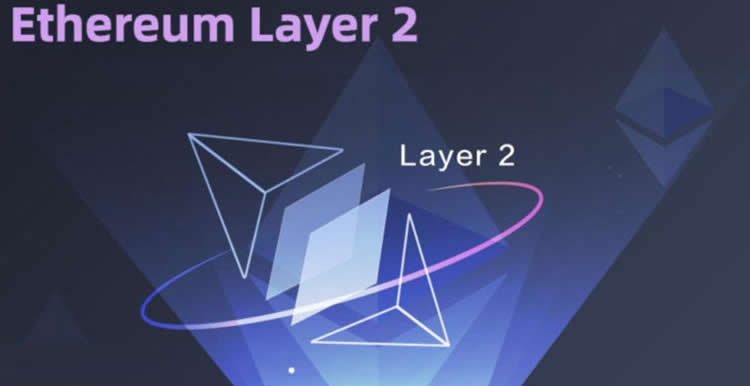Understand the meaning of L2 network and where its effects come from?
- WBOYWBOYWBOYWBOYWBOYWBOYWBOYWBOYWBOYWBOYWBOYWBOYWBforward
- 2024-01-19 13:54:14629browse
In previous discussions about the Cancun upgrade, it was often said that this is the best solution for L2 expansion, and it will also ambush some cryptocurrencies in the L2 field in advance. But what does this L2 network mean? Few people study it seriously. L2 network is Layer2 (second layer) network, which is a level in the computer network architecture. In computer networks, the OSI model or TCP/IP model is usually used to divide different layers. The second layer is the data link layer. Next, the editor will explain the L2 network in a simple way.

What does L2 network mean?
The L2 network is the second layer of the network in the OSI model, the data link layer. This layer is responsible for converting data into frames for transmission. Layer 2 networks are distinguished by their physical and logical addressing methods compared to other layers. Optimism, Arbitrum and Polygon are some common L2 networks.
Optimism is a second-layer expansion solution for Ethereum. It is characterized by full EVM compatibility and can easily migrate existing smart contracts to the Optimism network without modification. The basic principle of OptimisticRollup technology is to process all transactions off-chain and submit a merkleroot on-chain, thus greatly saving space and time on the chain. The main application scenarios of Optimism include decentralized exchanges (DEX), games and financial applications, etc. By introducing Optimism, the Ethereum network is able to process transactions more efficiently, provide a better user experience, and provide higher scalability for various decentralized applications.
Arbitrum is a second-layer expansion network of Ethereum, which is characterized by low transaction costs and fast confirmation times. Combined with OptimisticRollup technology, Arbitrum also introduces a mechanism called Fraud Proof to ensure the security and reliability of the network. The basic principle of the Fraud Proof mechanism is to store the proofs of all transactions on the chain. If illegal transactions are found, these proofs can be used to identify and punish them. Arbitrum is suitable for decentralized exchanges, games, financial applications and other fields.
Polygon, known as MaticNetwork in the early days, is a very popular second-layer expansion network for Ethereum. It is characterized by fast transaction confirmation time and very low transaction costs. Polygon uses a technology called Plasma, which can compress a large number of transactions into a merkleroot and submit it to the Ethereum main network, thus improving the throughput and performance of the entire network. The basic principle of Plasma technology is to build some sub-chains on the second-layer network, process transactions on the sub-chains, and then submit the results to the main chain. The main application scenarios of Polygon include decentralized exchanges, games, financial applications, etc.
Where do L2 network effects come from?
L2 network effect means that as the number of users increases, the value and utility of the network will increase accordingly. This effect often occurs in social media, communication platforms, and other systems where network effects are evident. There are six factors that lead to the L2 network effect: 1. The increase in the number of users will increase the coverage and connection opportunities of the network; 2. The increase in the number of users will improve the reliability and stability of the network; 3. The increase in the number of users will increase the network 4. The increase in the number of users will attract more advertisers and merchants to join the network; 5. The increase in the number of users will promote innovation and technological development; 6. The increase in the number of users will increase the social value and influence of the network. As the number of users increases, so does the network's connectivity and participation. Connections between users can be achieved through direct interaction, information sharing and communication. And more users means more potential connections, which increases the value of the network.
As the number of users increases, the content and data on the network will also increase. The sources of these content and data include user-generated content, information and media. More content attracts more users, creating a positive feedback loop.
3. Network utility: L2 network effect usually involves the overall utility of the network. As more users join, the overall utility of the network increases. Users' activities, communication, sharing and other behaviors on the Internet all constitute the utility of the network.
4. Social factors: In a social network, more users joining may mean a wider social circle, more friends and connections. This social influence can make a network more attractive.
5. Market share and standardization: Some L2 networks may become market standards, allowing more users to choose to join in order to interact and cooperate with more people. Standardization helps improve network interoperability and usability.
6. Technology and function expansion: As the number of users increases, network operators usually invest more resources to improve technology and functions to adapt to the growing demand. This further increases the effectiveness of the network.
The above is the detailed content of Understand the meaning of L2 network and where its effects come from?. For more information, please follow other related articles on the PHP Chinese website!

